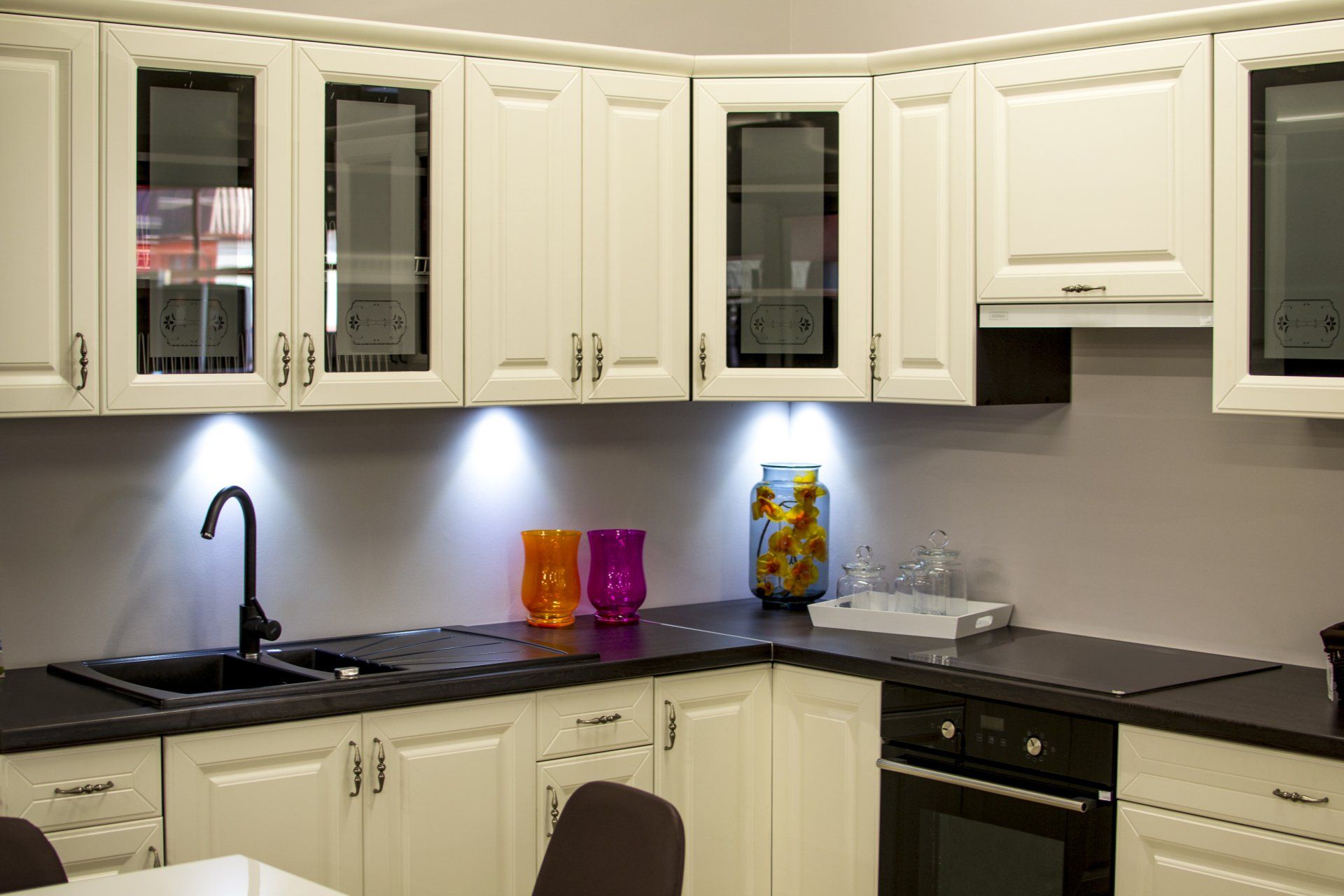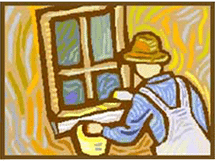Kitchen Cabinet Painting

Paint Your Kitchen Cabinets the Right Way
One of the best ways to update the look of tired or outdated cabinets is with a coat of paint. Painting your cabinets is a much more affordable option than purchasing brand-new ones, and it can completely change the look of your kitchen. It's not rocket science, and you don't have to be a professional painter or carpenter to make some changes around the house.
There is, however, a proper method for painting kitchen cabinets, and we recommend not skipping any steps if you want the best results. In this article, I'll explain how to paint your kitchen cabinets to update the look of the heart of your home.
Painting your kitchen cabinets is simple if you follow these simple steps. If you can use a screwdriver and a paintbrush or foam roller, you have what it takes to do this. You will need to put in some effort and allow the primer and paint to dry. Aside from that, painting your kitchen cabinets is as simple as 1, 2, 3.
-
Step 1: Select a paint type and color
Acrylic latex paint is frequently used for its durability and washability. Unlike matte finishes, semi-gloss, gloss, and satin sheens hide fingerprints and other marks well. Finishes like matte, flat, and ultra-glossy should be avoided due to their increased difficulty in cleaning.
You should also pick up some binding primer for the cabinets while shopping, as this will help the paint adhere better to the wood.
-
Step 2: Strip cabinets if painted, or wash them if not
It will be necessary to strip the cabinets if they have been previously painted. This is a time-consuming and labor-intensive process, so if you're debating whether to replace or paint, keeping that in mind may sway your decision.
You can use an all-purpose cleaner to clean them if they aren't painted. Remove any oil or grease stains that may affect the final product.
-
Step 3: Remove all doors and hardware
All drawers and doors should be unscrewed and removed from the cabinets. You can empty the shelves if you like, but unless you paint the inside or clean the area thoroughly, you need to remove the items from the front. A small drop cloth can be used as an alternative.
Helpful tip: some hinges and fixtures are only compatible with particular cabinets, so keeping everything in its proper place is helpful.
-
Step 4: Fill any holes
Wood filler and a smoothing knife will help you achieve perfectly smooth surfaces for painting. You probably won't be painting the cabinet interiors, so ignore those.
Helpful tip: if you fill your screw holes, it will be very difficult to attach the hardware. So, don’t fill them.
-
Step 6: Tape the edges
Use masking tape to prevent paint from getting on areas you don't want to be painted. This includes the cabinet's internal panels, the frame, and adjacent walls.
-
Step 8: Paint
When painting the cabinet frames, doors, and drawers, follow the grain the same way you would with primer. Use a finer brush to paint if the cabinets have unique details, nooks, or embellishments. For the most professional and consistent broadsides, use a miniature foam roller. It's also a lot quicker.
-
Step 9: Let the paint dry and attach the cabinets again
It's tempting to reattach your shiny new cabinet doors to their frames as soon as the paint appears dry, but doing so could damage the finish. Polyurethane can be applied as an extra layer of protection, but it will only be necessary if you use high-quality paint.
After the cabinets have dried, you can reinstall the doors and drawers with the original hardware. Try using a manual screwdriver to prevent screws from being stripped out of their heads.
As you can see, painting kitchen cabinets can be a lot of work. While this is something you can probably do yourself, if you want to save time and get the best look possible, consider hiring a professional like us. We'll do the work so we can take the pain out of painting! Give us a call or fill out the form below. We'll set up a time to come take a look at your project and give you a free estimate.
Get a Free Quote Today!
Contact Us
We will get back to you as soon as possible
Please try again later

All Rights Reserved | Brian Hoge Painting LLC
